What is Smart Home Smart Home?
- This small device will protect all your smart home devices
- Warning: Hackers can access smart speakers
Smart home (English is 'Smart Home') or smart home system is a house / apartment equipped with advanced automatic system for controlling lighting, temperature, multimedia , security, curtains, doors and many other features aimed at making life more comfortable, safe and contributing to the rational use of resources.
Smart home uses devices connected to the Internet to be able to manage and monitor devices and systems remotely such as light and temperature.
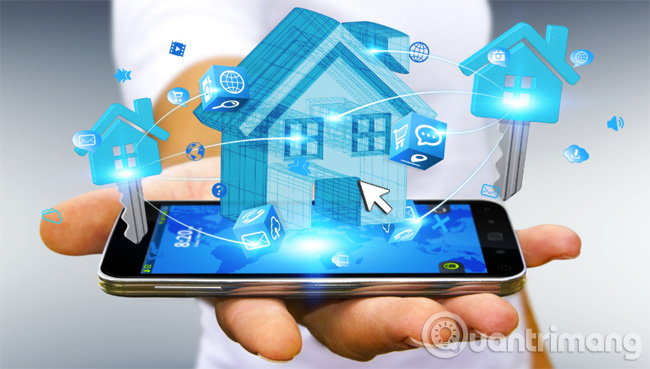 What is Smart Home Smart Home? Picture 1
What is Smart Home Smart Home? Picture 1
Smart Home smart technology, also known as Home Automation , provides homeowners with safety, comfort, convenience and energy savings by enabling them to control the Smart device by a smart home application on a smartphone or other networked device. Part of the Internet of Things (IoT) network, smart home systems and devices often work together, share user data and automate priority-based actions of the landlord.
Smart home origin
With the release of X10 in 1975, a communication protocol for Home Automation, a smart home, was just a fantasy dream in the animated series 'The Jetsons' (The Jetsons) that appeared in the series. real life . X10 sends 120 kHz (radio frequency - RF) signal of digital information to the existing indoor wiring to the programmable outputs or switches. These signals transmit commands to the respective devices, controlling how and when the device operates. For example, a transmitter can send a signal along an indoor wire, requiring the device to be turned on at a specific time.
However, because the power cord is not specially designed to prevent radio interference , the X10 is not always reliable. The signals will be lost and in some cases the signals do not pass through the circuits connected to the different poles, which are generated when the 220 volt service splits into a common 100 volt data pair. in the United States. X10 was originally a one-way technology, so smart devices could execute commands but could not send data back to the central network. Later, two-way X10 devices were produced at a higher cost.
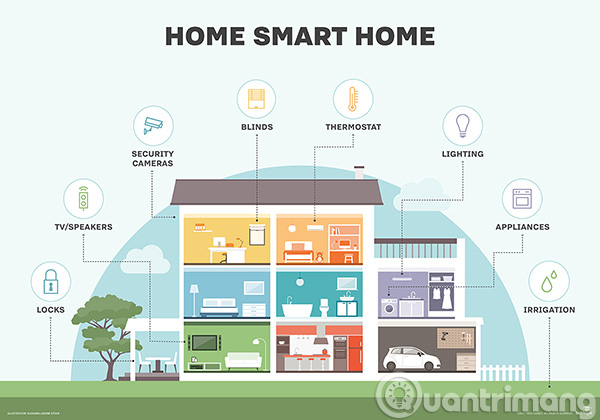 What is Smart Home Smart Home? Picture 2
What is Smart Home Smart Home? Picture 2
When Insteon home automation company appeared in 2005, the company introduced technology to connect wires with wireless signals. Other protocols, including Zigbee and Z-Wave , were launched to combat possible problems with the X10, although the X10 is still a widely-installed communications protocol.
Nest Labs was founded in 2010 and released the first smart product of the Nest Learning Thermostat in 2011. The company also created intelligent smoke / carbon monoxide detectors and security cameras. After Google acquired in 2015, Nest Labs became Alphabet Inc.'s subsidiary. in that year.
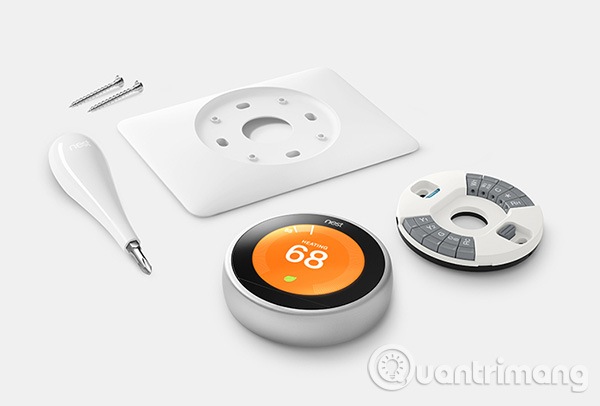 What is Smart Home Smart Home? Picture 3
What is Smart Home Smart Home? Picture 3
In 2012, SmartThings Inc. launched Kickstarter campaign, mobilizing $ 1.2 million budget to support smart home system. After supplementing the budget, the company launched the market in August 2013 and was acquired by Samsung in 2014.
Recently, companies including Amazon, Apple and Google have launched their Smart Home products and Smart Home platforms, including Amazon Echo, Apple HomeKit and Google Home.
Examples of smart home technology
Technology seems to have set foot in every aspect of life, including housing interior space (light bulbs, dishwashers and .).The birth of a smart home as a modern alternative:
- Smart TV - Smart TV connecting to the Internet, accessing content through applications, such as videos and music on demand. Some smart TVs include voice recognition or gestures.
- In addition to customizable and remote controls, smart lighting systems like Hue from Philips Lighting Holding BV, can detect when people are in the room and adjust the lighting if needed. Smart light bulbs can also adjust themselves based on daylight.
- Smart thermostats such as Nest Labs Inc.'s Nest, are built-in Wi-Fi, allowing users to schedule, monitor and control indoor temperature remotely. These devices also learn the behavior of homeowners and automatically modify settings to provide users with maximum comfort and efficiency. Smart thermostat can also report energy usage and prompt users to change filters.
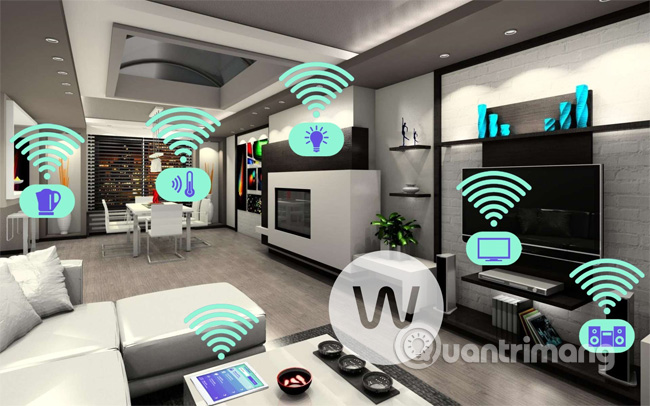 What is Smart Home Smart Home? Picture 4
What is Smart Home Smart Home? Picture 4
- Using smart lock and garage door opener , users can allow or refuse to open the door for guests to enter the house. Moreover, smart lock can also be detected when the landlord is near and unlocked for them.
- With smart CCTV , users can monitor their home when traveling or on vacation. Smart motion sensors can also identify differences between homeowners, guests, pets and thieves to notify authorities if suspicious behavior is detected.
- Can automatically take care of pets with pre-connected feeding system . Indoor plants and grasses are also watered with a connected timer.
- Kitchen appliances are available, including a smart coffee maker that can make a delicious cup of coffee as soon as your alarm goes off; Smart refrigerators track expiration dates, shop up lists or even create recipes based on available ingredients; cooker and toaster oven; in the laundry room with washing machine and dryer.
- The household system screens can sense the surge voltage and turn off the device;notice that the water pipe is broken or disconnected from the pipe and turn off the water to prevent it from spilling onto the floor.
 What is Smart Home Smart Home? Picture 5
What is Smart Home Smart Home? Picture 5
Advantages and disadvantages of smart home
One of the most outstanding benefits of home automation is providing peace of mind to homeowners, allowing them to observe the home from afar, against the dangers like neglected coffee machines or front doors. forgot to lock
Smart homes are also beneficial for the elderly, providing supervision to help older people stay at home more comfortably and safely than to transfer to nursing homes or to request home care 24/7.
Not surprisingly, smart houses can adapt to user preferences. For example, as soon as you get home, the garage door will open, the light will go on, the heater will turn on and your favorite tunes will start playing on the speaker.
Home automation helps users improve efficiency. Instead of letting the air conditioner run continuously during the day, the smart home system can learn your behavior and make sure the house will be cooled when you return home. Similar to household appliances: Smart watering systems, your lawn will be watered when needed with a sufficient amount of water. For home automation, energy, water and other resources are used more effectively, helping to save natural resources and money for users.
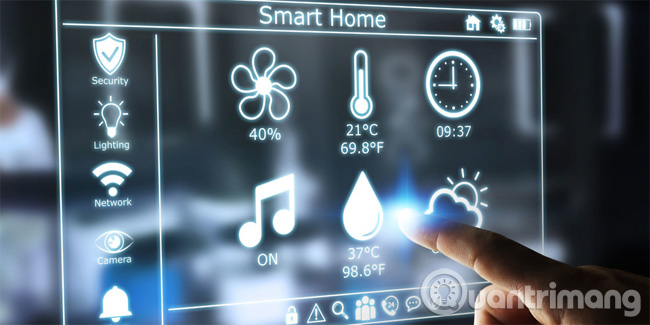 What is Smart Home Smart Home? Picture 6
What is Smart Home Smart Home? Picture 6
The home automation system attempts to become a mainstream, partly due to their technical nature. A limitation of smart home is the complexity of feeling , some people have difficulty using technology or will refuse to use it because they feel uncomfortable the first time. Smart home producers and their partners are trying to reduce complexity and improve the user experience, making it interesting and beneficial for users of all ages and levels. .
For home automation systems that are really effective, devices must interact with each other no matter who their manufacturers are, use the same protocol or at least, add another protocol. As a new market, there is no gold standard for home automation. However, standard alliances are partnering with manufacturers and protocols to ensure uninterrupted interoperability and user experience.
Another major problem is smart home security . NTT Data Corp. 2016 report shows that 80% of US users are interested in their smart home data security. If hackers can infiltrate a smart device, they can turn off the light, turn off the alarm and unlock the door to break in. Moreover, hackers can access the host's network, resulting in worse attacks or data leakage (Data Exfiltration).
In October 2016, Mirai IoT botnet (botnet Mirai IoT) collapsed part of the Internet by a series of distributed denial-of-service attacks (DDoS attacks - Distributed Denial of Service) using security cameras and machines. Turn DVR and router.
In addition to security, many people don't like smart houses because they worry about private data. NTT Data reports that 73% of users are interested in private data shared by smart home devices. Although smart home appliance manufacturers and platform manufacturers can collect user data to better adjust their products, or provide innovative new services to customers, but trust Ideas and transparency are important for manufacturers to build trust with users of their smart products.
How does smart home work?
New homes are usually built on smart on-site infrastructure. On the other hand, older houses can be equipped with smart technology. Although many smart home systems still run on X10 or Insteon, Bluetooth and Wi-Fi have become popular.
Zigbee and Z-Wave are two of the most popular home automation communication protocols used today. Both network technologies use short-range, low-power radio signals to connect smart home systems. Although both target smart home applications, Z-Wave has a range of more than 30 meters compared to 10 meters of Zigbee and Zigbee which are often considered more complicated. Zigbee chips are available from many companies, while Z-Wave chips are only available from Sigma Designs.
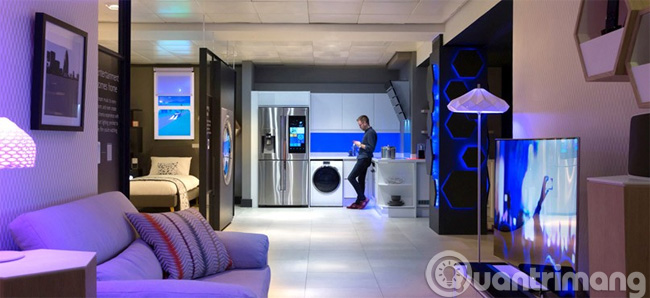 What is Smart Home Smart Home? Picture 7
What is Smart Home Smart Home? Picture 7
Smart houses are not separate devices and applications, they work together to create a network that can be remotely controlled. The host controls all devices controlled by an automatic controller, called smart home hub. Smart home hub is a hardware device that acts as the central point of the smart home system that can sense, process and wireless communication. It combines all individual applications into a single smart home application that can be controlled remotely by the host. Examples of smart home hubs include Amazon Echo, Google Home, Insteon Hub Pro, Samsung SmartThings and Wink Hub.
Some smart home systems are created from scratch, such as using a Raspberry Pi or prototype board. Other products can be purchased as a smart home kit - also known as a smart home platform - containing the parts needed to start a home automation project.
In simple smart home models, events can be timed or activated. Clock-based events, such as lowering the curtain at 6 pm, the event is triggered based on the action in the automated system; As the homeowner's smartphone comes near the door, the smart lock will open and the smart light will light up.
Machine learning and artificial intelligence (AI) are becoming increasingly popular in smart home systems, allowing home automation applications to adapt to their environment. Voice-activated systems, such as Amazon Echo or Google Home, have virtual assistants that help to understand and personalize smart home with user preferences and behavior.
Refer to some more articles:
- Top 5 technologies are expected to change people's lives in the future
- 12 'must-have' devices for smart home (Smart Home)
- Smart cell home box knows 'transformation', fully self-assembled in 10 minutes
Having fun!
You should read it
- 12 'must-have' devices for smart home (Smart Home)
- Learn about Home Assistant - Your home automation platform!
- Smart home technology and unpredictable hazards
- 6 smarthome tools you should equip your family
- How to Ensure That the Smart Home Doesn't Jeopardize Data Privacy?
- Learn about Xiaomi Smart Home
- How will smart home equipment be lost?
- 6 ways seniors can use Google Home to make the COVID-19 quarantine easier
- The best smart thermostats of 2020
- Amazon acquired Ring, increased security for smart home products
- How to turn a Raspberry Pi into a home automation panel
- Hackers can now gain control of a smart home assistant using a laser
May be interested

How to invite friends to 'use Viettel 4G sharing' every month to save

What is the IMEI number?

Learn about Edge Sense edge touch technology

Learn about WPA3, the latest WiFi security standard today

Learn about Server role, Role service and Feature on Windows Server

Answer common questions about SIM card of Vietnamobile
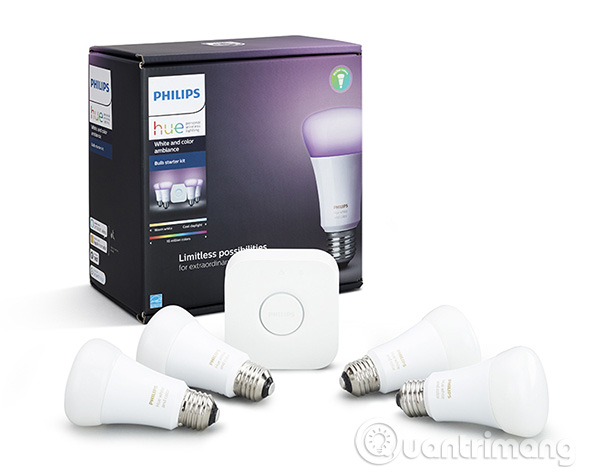






 12 'must-have' devices for smart home (Smart Home)
12 'must-have' devices for smart home (Smart Home) Smart home technology and unpredictable hazards
Smart home technology and unpredictable hazards Smart devices that don't have to be purchased
Smart devices that don't have to be purchased Do you need a Smart Home Hub? How to choose?
Do you need a Smart Home Hub? How to choose? How to Ensure That the Smart Home Doesn't Jeopardize Data Privacy?
How to Ensure That the Smart Home Doesn't Jeopardize Data Privacy? How to turn an old tablet into a Smart Home Hub
How to turn an old tablet into a Smart Home Hub